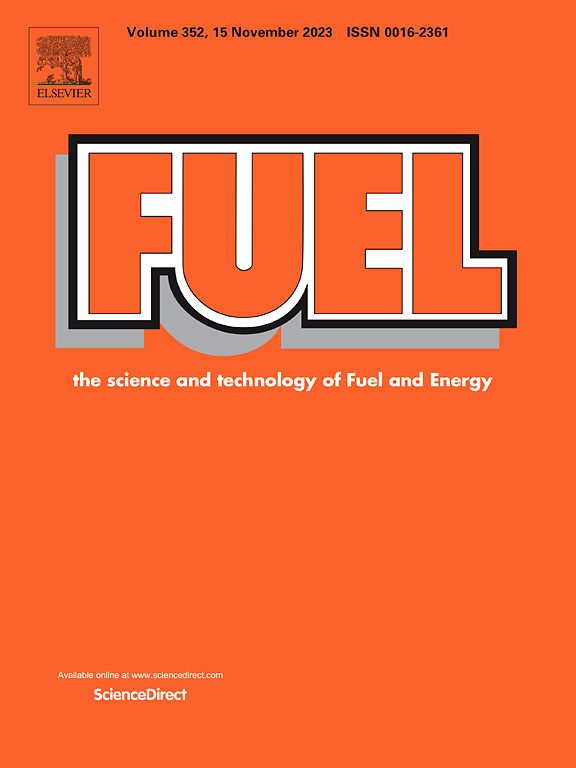Multifunctional ceramic-reinforced nanocomposite hydrogel for thermal runaway propagation blocking and heat dissipation of lithium-ion battery modules
IF 6.7
1区 工程技术
Q2 ENERGY & FUELS
引用次数: 0
Abstract
As the energy density and capacity of lithium-ion batteries (LIBs) continues to increase, safety issues caused by thermal runaway propagation (TRP) have become one of the most significant threats to electric vehicles (EVs) and energy storage systems (ESS). Reducing the risk of TRP is important for the widespread use of LIBs. In this study, a novel hydrogel and glass fiber (GF) composite thermal insulator was fabricated using a skeletal structure optimization technique to inhibit TRP in LIB modules. Mechanical and thermal insulation test results show that by optimizing the formulation and structural design, the maximum compressive strength of the composite hydrogel is increased from 10.32 MPa to 36.32 MPa, and the material has a low thermal conductivity (0.03145 W·m−1·K−1) after dehydration, which can provide continuous thermal protection for the battery. In thermal stability tests, the material demonstrated excellent flame retardancy with a peak HRR release rate of 45.68 KW/m2, a reduction of 51.17 % compared to when no HAP was added. The material is also environmentally friendly, with total CO and CO2 emissions of only 0.39 g, or 2.67 % of total emissions. A study of TRP suppression behavior was carried out on a fully charged 18650-NCM811 battery pack (3 × 3 arrangement). The results showed that filling 4 mm composite hydrogel was able to extend 1442 s, 1319 s and 1405 s, with a maximum temperature difference between batteries averaging 510.4 °C, and drastically reduce the size of the TRP compared to the blank control group when the heat source was at the corner, side and center, respectively. In addition, the material exhibits excellent thermal management performance, with the maximum temperature of the hydrogel-cooled battery module at 3C discharge multiplier being only 62 °C, a 19.7 % reduction on the air convection-cooled battery module (77.2 °C). This study provides a cost-effective and environmentally friendly solution for TRP suppression in LIB modules.
多功能陶瓷增强纳米复合水凝胶用于锂离子电池组件的热失控传播阻断和散热
随着锂离子电池(LIBs)能量密度和容量的不断提高,热失控传播(TRP)引起的安全问题已成为电动汽车(ev)和储能系统(ESS)面临的最大威胁之一。降低TRP的风险对lib的广泛使用很重要。在本研究中,采用骨架结构优化技术制备了一种新型的水凝胶和玻璃纤维(GF)复合隔热材料,以抑制LIB模块中的TRP。力学和隔热测试结果表明,通过优化配方和结构设计,复合水凝胶的最大抗压强度从10.32 MPa提高到36.32 MPa,材料脱水后导热系数低(0.03145 W·m−1·K−1),可为电池提供持续的热保护。在热稳定性测试中,材料表现出优异的阻燃性,峰值HRR释放率为45.68 KW/m2,比未添加HAP时降低了51.17%。这种材料也很环保,CO和CO2的总排放量仅为0.39 g,占总排放量的2.67%。在充满电的18650-NCM811电池组(3 × 3排列)上进行了TRP抑制行为的研究。结果表明,填充4 mm复合水凝胶后,分别在热源位于角落、侧面和中心的情况下,电池间最大温差平均为510.4℃,延长时间为1442 s、1319 s和1405 s, TRP尺寸较空白对照组显著减小。此外,该材料表现出优异的热管理性能,在3C放电倍率下,水凝胶冷却电池模块的最高温度仅为62°C,比空气对流冷却电池模块(77.2°C)降低了19.7%。本研究为LIB模块中的TRP抑制提供了一种经济、环保的解决方案。
本文章由计算机程序翻译,如有差异,请以英文原文为准。
求助全文
约1分钟内获得全文
求助全文
来源期刊

Fuel
工程技术-工程:化工
CiteScore
12.80
自引率
20.30%
发文量
3506
审稿时长
64 days
期刊介绍:
The exploration of energy sources remains a critical matter of study. For the past nine decades, fuel has consistently held the forefront in primary research efforts within the field of energy science. This area of investigation encompasses a wide range of subjects, with a particular emphasis on emerging concerns like environmental factors and pollution.
 求助内容:
求助内容: 应助结果提醒方式:
应助结果提醒方式:


